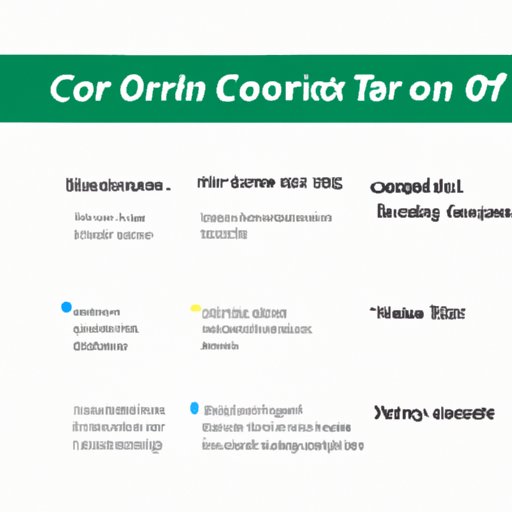Introduction
A corneal transplant is a medical procedure in which a damaged or diseased cornea is replaced with healthy tissue from a donor. The cornea is the clear outer layer of the eye, and it’s essential for vision. A corneal transplant is necessary for people who have severe vision loss due to an injury, infection, or other condition. It’s important to understand the potential risks associated with driving after a corneal transplant, as well as the timeline for when it’s safe to get behind the wheel again.

Exploring the Safety of Driving After a Corneal Transplant
The healing process following a corneal transplant can be lengthy and complex. It typically takes several months for the transplanted cornea to fully heal. During this time, a person’s vision can be blurry or distorted, making it difficult to drive safely. Additionally, there are certain side effects that can affect a person’s ability to drive, such as dry eyes, light sensitivity, and double vision.
It’s important to consult with your doctor before attempting to drive after a corneal transplant. Your doctor will be able to assess your individual situation and provide guidance on when it’s safe for you to get behind the wheel again.
How Long Should You Wait Before Driving After a Corneal Transplant?
Your doctor will likely provide specific guidelines for when it’s safe to start driving after a corneal transplant. Generally, it’s recommended that you wait at least six weeks before getting behind the wheel. This allows enough time for the transplanted cornea to heal and for any vision issues to improve. In some cases, it may be necessary to wait even longer than six weeks before driving.
It’s also important to keep in mind that the timing of when you can drive again may depend on the type of corneal transplant you had. For example, if you had a full-thickness transplant, you may need to wait longer than someone who had a partial-thickness transplant.

Understanding the Impact of Corneal Transplants on Driving
Before you start driving again, it’s important to make sure you feel confident in your abilities. You should only get behind the wheel when you feel comfortable and are confident that you can drive safely. If you experience any vision issues while driving, it’s best to pull over and rest until the issue subsides.
In some cases, it may be necessary to make certain adaptations while driving. For instance, you may need to adjust the position of your seat or steering wheel, or use additional mirrors to gain a better view of the road. Additionally, you may want to consider wearing protective eyewear while driving, such as sunglasses or a hat with a brim, to reduce glare and protect your eyes from the sun.
Tips for Safely Driving After a Corneal Transplant
When driving after a corneal transplant, it’s important to take extra precautions to ensure your safety. Here are some tips for safely driving after a corneal transplant:
- Wear protective eyewear, such as sunglasses or a hat with a brim, to reduce glare and protect your eyes from the sun.
- Take extra precautions when driving in different conditions, such as rain or snow.
- Make necessary adjustments to your vehicle, such as adjusting the seat or steering wheel position, or adding additional mirrors.

Evaluating the Timing of When You Can Drive After a Corneal Transplant
Ultimately, the timing of when you can start driving again depends on your individual situation. Factors such as the type of corneal transplant you had, the speed of your recovery, and any vision issues you may be experiencing can all impact when you’re ready to get behind the wheel. It’s important to evaluate these factors carefully before deciding when it’s safe to start driving again.
Most doctors will recommend waiting at least six weeks before attempting to drive after a corneal transplant. However, in some cases, it may be necessary to wait longer. Ultimately, it’s important to consult with your doctor and follow their advice to ensure your safety.
Conclusion
A corneal transplant can significantly impact a person’s vision and driving capabilities. It’s important to understand the potential risks associated with driving after a corneal transplant, as well as the guidelines for when it’s safe to get behind the wheel again. It’s also important to make sure you feel confident in your abilities before driving, and to take extra precautions to ensure your safety. By understanding the healing process, potential risks, and tips for safe driving, you can make an informed decision about when it’s appropriate to start driving after a corneal transplant.
(Note: Is this article not meeting your expectations? Do you have knowledge or insights to share? Unlock new opportunities and expand your reach by joining our authors team. Click Registration to join us and share your expertise with our readers.)
